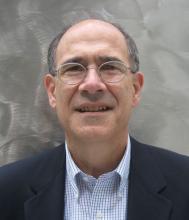They have gone by many different names over the centuries: hysteria, psychosomatic illnesses, psychogenic neurological disorders, conversion disorders, dissociative neurological symptom disorders. The terminology may change, but functional neurological disorders by any other name are still real and serious yet treatable phenomena.
Functional neurological disorders, or FNDs, live at the crossroads of neurology and psychiatry, and they are as much a product of the body as they are of the brain, say neurologists who specialize in treating these complex and clinically challenging conditions.
“Whether they’re easily recognized or not depends on someone’s training and experience in this regard,” said Mark Hallett, MD, of the Human Motor Control Section of the National Institute of Neurological Disorders and Stroke in Bethesda, Maryland.
“The difficulty has been that there hasn’t been very good education about functional disorders over the last 50 years or so,” he said in an interview.
However, with training and experience, clinicians can learn to identify these common and disabling conditions, Dr. Hallett said.
Varying Definitions
The Diagnostic and Statistical Manual of Mental Disorders 5th edition (DSM-5) labels FND as “conversion disorder,” and lists diagnostic criteria that include “one or more symptoms of altered voluntary motor or sensory function; clinical findings provide evidence of incompatibility between the symptom and recognized neurological or medical conditions; the symptom or deficit is not better explained by another medical or mental disorder;” and “the symptom or deficit causes clinically significant distress or impairment in social, occupational, or other important areas of functioning or warrants medical evaluation.”
Dr. Hallett offers his own definition of FND, which includes the following characteristics:
- A neurological disorder, characterized by almost any type of neurological symptom
- Not voluntarily produced
- Caused by a brain network dysfunction that does not exclude the possibility of normal function
- Sometimes due in part to a psychological cause, and not explained by other neurological pathology that may or may not be present
- Symptoms may be inconsistent (variable) or incompatible (incongruent) with other known neurological disorders or human anatomy and physiology.
The two most common types of FND are psychogenic nonepileptic seizures and functional movement disorders, but patients may also have functional sensory, visual, auditory, speech, and urologic disorders, and even functional coma.
Dr. Hallett cited studies showing that an estimated 9% of neurology hospital admission are for FNDS, and that among patients in neurology clinics 5.4% had a diagnosis of FND, and 30% had an FND as part of the diagnosis.
Women comprise between 60% and 75% of the population with FNDs.
Diagnosis
FND is not, as once thought, a diagnosis of exclusion, but is based on signs and symptoms, which may be either inconsistent or irreversible and may occur in the absence of a stressor, said Sara Finkelstein, MD, MSc, of the Functional Neurological Disorder Unit in the Department of Neurology at Massachusetts General Hospital in Boston.
She emphasized that there are several diagnostic pitfalls that clinicians need to be aware of.
For example, “just because a patient has a psychiatric history does not mean that they have a functional neurological disorder,” she said in an interview.
Clinicians may also make unwarranted assumptions about a given patient, excluding an FND diagnosis in, say, a young woman with symptoms of anxiety. Alternatively, clinicians may either include or exclude a diagnosis based on personality factors or on a prior stressor, neither of which alone are sufficiently diagnostic.
Additionally, a clinician may be tempted to make the diagnosis of an FND based on the absence of findings on standard exams rather than on rule-in signs and symptoms, she emphasized.
Functional seizures
A definitive diagnosis can depend on the type of disorder.
“Many functional seizures have some clinical manifestations that are apparent, but as seizures are intermittent the doctor may not see one, and it may depend upon someone taking a video of the person with the seizure perhaps, or bringing them into a hospital and watching them until they do have the seizure,” Dr. Hallett said.
There are some manifestations that indicate the likelihood that a seizure has a functional origin, and when there is uncertainty EEG can help to nail down a diagnosis, he added.
Dr. Finkelstein noted that exam signs with good reliability for functional seizures include eye closure or resistance to opening; duration longer than 2 minutes; stopping and starting; asynchronous limb movements; patient maintenance of awareness during a generalized event; and ictal weeping.
Differential diagnoses included migraine with complex aura, dissociation related to posttraumatic stress disorder, or anxiety.
Functional movement disorders
Dr. Finkelstein cautioned that when evaluating patients for potential functional movement disorders, it’s important to not jump to conclusions.
For example, the amplitude of tremor can vary in Parkinson’s disease and essential tremor as well as in functional tremor. The clinician should not read too much into the observation that a patient’s tremor gets worse with increasing stress as stress can exacerbate most tremor types, she said.
One sign that tremor could be functional (dystonic tremor) is irregularity of amplitude and frequency, she noted.
When assessing patients with gait disorder, it’s important to understand that there is no single sign that is specially characteristic for a given disorder, and just because a patient has a “bizarre” gait, it doesn’t necessarily signal a functional disorder.
“A dystonic gait may improve with an alternate motor pattern or be inconsistent over time,” Dr. Finkelstein said.
Treatment
In a comprehensive review published in The Lancet: Neurology in 2022, Dr. Hallett and colleagues said that good doctor-patient communications and understanding of each patient’s needs and goals are essential for effective treatment of all FNDs.
“Neurologists have traditionally avoided taking responsibility for people with FND, although are often most appropriate to engage patients in treatment. Explaining the diagnosis with clarity, confidence, using the principles of a ‘rule in’ process, is a key step in treatment,” they wrote.
Treatment can take several forms, depending on the FND, and may include physiotherapy for patients with functional movement disorders and psychological therapy for patients with functional seizures.
“With increasing evidence-based treatment, the diagnosis of FND should be seen as a process of looking for potentially reversible cause of disability and distress whether or not an individual has abnormalities on conventional laboratory or radiological testing,” Dr. Hallett and colleagues concluded.
This article was based on interviews and from presentations by Dr. Hallett and Dr. Finkelstein at a 2023 meeting of the Indiana Neurological Society. Dr. Hallett and Dr. Finkelstein declared no conflicts of interest.



